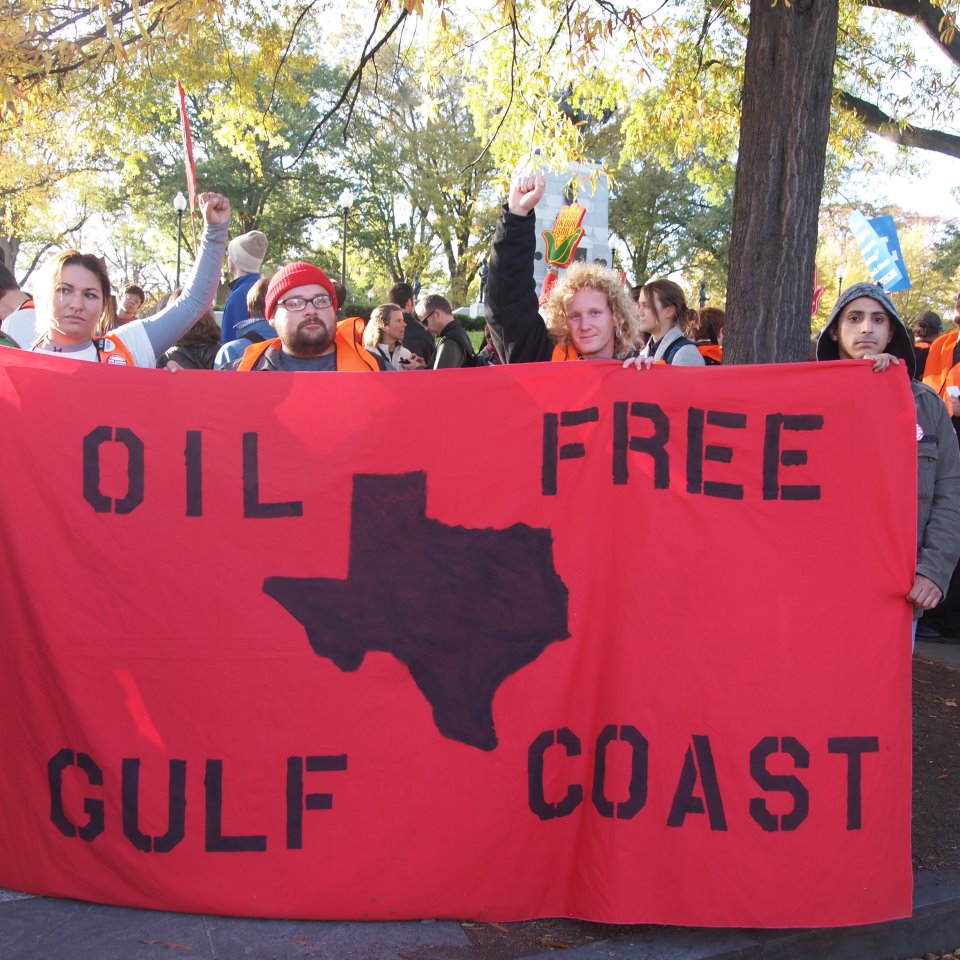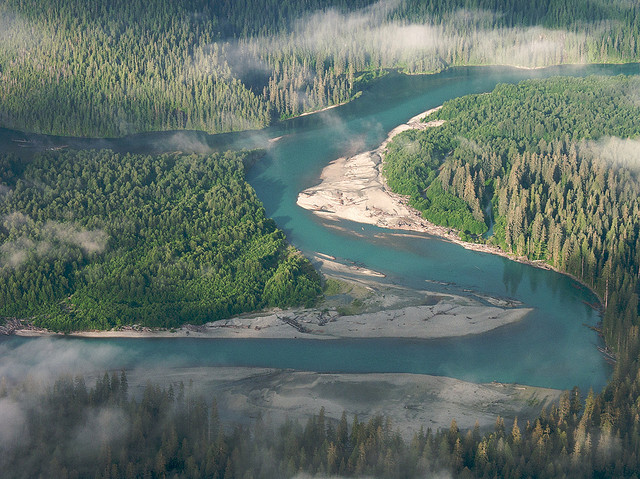
by Deep Green Resistance News Service | Jul 28, 2012 | Defensive Violence, NEWS, Obstruction & Occupation, Property & Material Destruction, Toxification
By Shiv Malik for The Guardian
Officials in eastern China have cancelled a planned industrial waste pipeline project after up to 1,000 environmental demonstrators occupied a government office, overturned cars, destroyed computers and beat police officers.
The demonstration in the city of Qidong was the latest in a string of protests sparked by fears of environmental degradation.
Zhang Guohua, mayor of the eastern city of Nantong, announced the cancellation of the pipeline, which would have emptied waste water from a Japanese-owned paper factory via the coastal town of Qidong into the sea. It is the second industrial project to be cancelled in a month.
The decision came hours after about 1,000 protesters marched through the city of Qidong, about one hour north of Shanghai, shouting slogans against the pipeline.
Several protesters entered the city government’s main building and were seen smashing computers, overturning desks and throwing documents out of the windows to loud cheers from the crowd. Five cars and one minibus were also upended, according to Reuters reporters at the scene.
At least two police officers were dragged into the crowd at the government office and punched and beaten bloody.
Environmental worries have stoked calls for expanded rights for citizens and greater consultation in the tightly controlled one-party state and come before a once-in-a-decade leadership transition this year.
The protest followed similar demonstrations against projects in the Sichuan town of Shifang earlier this month and in the cities of Dalian in the north-east and Haimen in southern Guangdong province in the past year.
The government in Shifang halted a multimillion-pound copper alloy plant project because it said there was insufficient public understanding and support after teargas was used to disperse protesters.
The Chinese government has vowed to clean up China’s skies and waterways and increasingly tried to appear responsive to complaints about pollution.
But environmental disputes pit citizens against local officials, whose aim is to lure fresh investment and revenue into their areas.
From The Guardian
Photo by Yiran Ding on Unsplash

by Deep Green Resistance News Service | Jun 26, 2012 | Climate Change, Obstruction & Occupation
By Candice Bernd / TruthOut
The deadline for the review of TransCanada’s permits for the Gulf Coast portion of the Keystone XL pipeline was Monday, June 25, 2012. At the Texas Army Corp of Engineers Galveston office and without any finalization of review, those permits will be automatically granted to the corporation – thanks to President Obama’s announcement that he would expedite the southern leg of the pipeline in Cushing, Oklahoma, back in March.
That’s why Texas climate justice activists, including myself, are officially announcing the Tar Sands Blockade, an epic action that we have been organizing since the beginning of the year. We’re mostly associated with Rising Tide North Texas, and we’re 100 percent prepared to use nonviolent, direct action to block the pipeline’s construction to protect our home.
Bring it, TransCanada
The Tar Sands Blockade will be coordinating nonviolent, direct actions along the pipeline route to stop this zombie pipeline once and for all. We are working with national allies as well as local communities to coordinate a road show that will travel throughout Texas and Oklahoma as well as a regional training effort for activists interested in getting involved in the blockade movement against the Keystone XL.
“Our action is giving a new meaning to ‘Don’t Mess with Texas,'” said Tar Sands Blockade Collective member Benjamin Kessler. Kessler is also a member of Iraq Veterans Against the War.
The permits for the pipeline’s construction are being automatically granted under the Nationwide Permit 12 protocol, or NWP 12. The permits do not need an environmental impact statement to accompany them, according to this process. That very fact alone endangers more than 631 streams and wetlands that the pipeline will cross in our state. Not only that, but the entire Carrizo-Wilcox Aquifer, which supplies drinking water for ten to 12 million homes across 60 counties in East Texas, along the pipeline’s path, is threatened with contamination.
The Keystone XL remains key to the expansion of the Alberta tar sands and leading NASA climate scientist James Hansen has called the pipeline “a fuse to the largest carbon bomb on the planet.” According to Hansen, if the carbon stored in the tar sands is released into the atmosphere, it would mean “game over for the climate.”
350.org founder Bill McKibben has worked hard to get Hansen’s message out to the public and to lawmakers in Washington. After more than 1,200 were arrested during the onset of the Tar Sands Action last fall, another 12,000 turned out to surround the White House to tell President Obama that the Keystone XL is not in the nation’s best interest.
McKibben was elated to hear that the Tar Sands Blockade is continuing to foster the spirit of resistance against the pipeline in the South with the use of nonviolent, direct action.
“Let’s be clear what the drama is here: human bodies and spirits up against the unlimited cash and political influence of the fossil fuel industry. We all should be grateful for this peaceful witness,” McKibben said.
Landowners living along the pipeline’s path say they have been intimidated by TransCanada to sign away the rights to their land, and it’s not just landowners that will lose. The pipeline is expected to destroy indigenous archeological and historical sites – including grave sites – in Oklahoma and Texas.
Read more from TruthOut: http://truth-out.org/news/item/9997-its-time-for-a-texas-tar-sands-blockade

by Deep Green Resistance News Service | Jun 6, 2012 | Biodiversity & Habitat Destruction, Colonialism & Conquest, Indigenous Autonomy, Toxification
By Kavitha Chekuru / Al Jazeera
The sun pierces through thin slices of halibut that lie drying across cylindrical pieces of wood as Christopher Stuart continues to delicately cut more of the freshly harvested fish for the sun to bake.
Stuart, a member of Canada’s Gitga’at First Nation, is performing the task for the first time at the tribe’s annual spring harvest on Princess Royal Island, just off the coast of British Columbia. But it’s not his first time at the seasonal camp called Kiel. He has come every year since he can remember to gather with other Gitga’at to harvest halibut and seaweed.
Helen Clifton, an elder of the Gitga’at, watches him from inside a small house on the rocky shore, as she begins her 70th year at the spring harvest.
“The tide is moving on this coast, up and down,” she says. “The tide does not stand still.”
It’s an apt description for so many situations the Gitga’at and other First Nations, Canada’s indigenous communities, find themselves in, as they work to preserve their traditions while living alongside Canada’s quest to exploit the natural resources of the land that was once theirs. While the tide helps bring in the seaweed they harvest, it could just as easily be the same tide that takes away that food if the waters become Canada’s highway to global energy markets.
Calgary-based energy firm Enbridge has proposed building a pipeline from Canada’s oil-rich province of Alberta to carry crude to the port of Kitimat. From there, the crude would be loaded onto tankers bound for Asia, traversing the forested coast of British Columbia.
First Nations and many other communities in British Columbia and Alberta find themselves in the middle of supply and demand – between Canada’s expanding oil industry, home to the world’s third-largest oil reserves; and the rapidly growing economies in East Asia, particularly China. Enbridge’s proposed pipeline, the $5.5bn Northern Gateway, would be the bridge. But the project would cut through the Great Bear Rainforest, a treasured nature preserve and one of the largest intact coastal rainforests in the world. This, in addition to safety concerns from environmental groups and First Nations, have been at the heart of much of the opposition to the project.
Environmental worries
Trees overwhelm the hilly islands that thread through the waterways here, a stunning confluence of mountain and sea, whales and wolves. The forest had been at risk from logging until 2006 when the provincial government, industry, environmentalists and First Nations came to an agreement to preserve large parts of the forest – a rare alliance between opposing sides.
“It’s a model for the scale of conservation that’s required to maintain ecosystem health, while at the same time supporting communities with revenue and jobs that don’t damage the ecosystem we depend on,” says Caitlyn Vernon, a campaigner with the Sierra Club of British Columbia. “Over a decade of work developing this model would be put in jeopardy by an oil spill.”
Vernon and other conservation groups say that if oil makes its way into the waters of the forest, it would cause a ripple effect through the intricately connected marine and terrestrial ecosystems. Even if there is no spill, environmentalists say increased tanker traffic could still cause damage by possibly introducing new bacteria from other waters.
The Gitga’at say they know the risks of a spill all too well. In 2006, a ferry boat travelling near their main village of Hartley Bay ran aground and sank. The ship sits at the bottom of the water just south of the bay to this day and still leaks diesel fuel into the waters in which the Gitga’at fish.
“All the promises were made and nothing happened,” says Clifton. “And today it’s still bubbling and burping.”
Enbridge acknowledges the risks of its project, but insists it has taken both the pipeline and tanker routes into serious consideration and can protect both the land and marine ecosystems.
“We’re planning on putting in place a number of risk mitigation factors. On the marine side, that includes that all tankers coming into port will be vetted by third-party experts,” Todd Nogier, an Enbridge spokesman, told Al Jazeera. “All will be boarded by British Columbia pilots who understand the area and how it behaves.” Nogier says there will also be state-of-the-art technology used for the pipeline and navigational aides installed along the tanker route to increase safer tanker traffic.
“It’s a smart way to enable Canada to move forward in an industry that is very important to the country and do something that’s an important priority for the country. And that’s finding a new market for this energy resource.”
But Enbridge faces a number of hurdles in marketing the proposal to British Columbia. One of the main selling points has been economic benefits. The firm says thousands of jobs would be created through Northern Gateway and that the project would contribute $270bn to Canada’s GDP over 30 years. But the majority of jobs would be short-term employment in the pipeline’s construction. Only a few hundred long-term jobs are expected, primarily at the marine terminal in Kitimat. Critics of Northern Gateway say far more jobs in fishing and tourism are at stake if there is a pipeline breach or oil spill.
First Nations concerns
While there has been vocal opposition from many First Nations, Enbridge says it has support from a number of bands in Alberta and British Columbia. The company is also offering communities that would be affected a 10 per cent stake in the project, in addition to a large percentage of the local jobs. It’s still a hard sell to some First Nations, such as the Haisla, who live by the port of Kitimat.
“I think that there’s definitely an area where our people need to take advantage,” says Gerald Amos, a Haisla elder. “We’re no different than other people where we require a way to sustain ourselves in today’s reality. However, there are limits to that.”
“This water was described as the dinner plate of the Haisla people,” Amos continues. “The richness here has been pretty much constant over my lifetime, but we’re now seeing a decline that I’m afraid will lead to extinction for some stocks.” Some species have already seen sharp drops, like the eulachon and salmon, particularly after restrictions on indigenous fisheries and industrial pollution over the past century. With fish as their main source of sustenance and income, the loss of key species has had a pronounced effect on their culture.
“When I’ve got some of my grandchildren out here with me, I’m always tempted to point out the places that were important for our harvesting. And they’ve got Haisla names,” says Amos, as he gestures to the vast waters surrounding his boat and village. “Once we have a generation that doesn’t understand what that is, what else is left? That’s why I’m pretty certain that an oil spill would take away whatever culture we have left.”
Read more from Al Jazeera: http://www.aljazeera.com/indepth/features/2012/06/201263729350592.html

by Deep Green Resistance News Service | May 27, 2012 | Obstruction & Occupation
By Tim Groves / Toronto Media Co-op
Environmental justice protestors temporarily shut down a hearing into a proposal to have tar sand oil piped through Ontario. The hearing took place place in London, Ontario, on Wednesday.
The three day hearing, held by the National Energy Board (NEB), is examining a proposal by Enbridge to reverse the flow of an existing pipeline (Line 9), which currently carries imported overseas oil west. Enbridge wants to instead use the pipeline to bring tar sands oil east. This oil may then be exported to Europe.
After entering the hearing, protestors employed the People’s Mic, where the crowd would echo back whatever was said by a spokesperson in order to project their voices. After a few minutes of the People’s Mic commencing, most other attendees at the hearing exited the room. The NEB hearing was shut down for approximately an hour.
The spokesperson who led the Peoples Mic was arrested and then removed from the room. She was later released with a ticket for trespass.
The protestors raised concerns about the environmental impacts of the Alberta tar sands, the possibility of a spill in Ontario and the lack of prior and informed consent being sought from First Nations in Ontario.
“Six Nations rights already have been violated in this review process,” stated Wes Elliot, a resident of Six Nations in a press release. “Free, prior, and informed consent is not a factor in these hearings.”
Line 9 cuts through the Haldimand Tract, land which was deeded to Six Nations in 1784.
“We also must object to the illegitimate and anti-democratic conduct of the officials who are fast-tracking this review,” said Elliot in the release.
Following the protest, demonstrators held what they dubbed an unofficial “People’s Hearing on the Tar Sands Pipeline.”
“The current framework of the National Energy Board hearings does not allow us to draw connections between tar sands extraction, toxic refineries and upgraders, and various other downstream consequences,” said Taylor Flook a member of Occupy Toronto who attended the event in London. “The People’s Hearing was arranged as a more open forum, where anyone can share any of their concerns about relevant issues.”
“The tar sands industry is attempting to build as many pipelines as they can,” said Flook. “We should not accept the fast-tracking of these projects,” she said. “No tar sands operations should proceed without the consent of everyone who may be impacted.”
As the extraction of tar sands from Alberta has increased, a series of new pipeline projects have emerged to bring the dirty oil to refineries and ports across Canada and the US.
The Harper government has loudly endorsed these projects. But following a series of protests against TransCanada’s XL pipeline, which would send tar sands oil south, President Obama delayed approval for a section of the project that goes through the United States until after US elections, which will take place in November.
Opposition by First Nations and environmentalists to Enbridge’s proposed Northern Gateway pipeline, which would bring oil from Alberta to the BC coast for shipment overseas, has garnered attention across Canada.
Protestors worry the Line 9 Reversal could be rushed through before there is time to build awareness and opposition to the pipeline. But they say many of the concerns with the Northern Gateway Pipeline also apply to the Line 9 reversal.
The Line 9 approval process is taking place in two phases. The London hearing deals with bringing oil from Sarnia, Ontario, to Westover, Ontario. The second phase regards oil transport from Westover to Montreal, Quebec.
From The Dominion: http://www.dominionpaper.ca/articles/4482
by Deep Green Resistance News Service | May 4, 2012 | Mining & Drilling
By ENews Park Forest
The Army Corps of Engineers has confirmed that Canadian oil firm TransCanada has submitted applications to Corps district offices in Tulsa, Galveston, and Ft. Worth for a Nationwide Permit 12 (NWP 12) to build the southern leg of the Keystone XL tar sands oil pipeline from Cushing, Oklahoma through Texas to the Gulf Coast.
TransCanada has pursued a NWP 12 to further evade a thorough, science-based review of its pipeline’s likely impacts. Its recent application submission triggers a 45-day deadline by which the Corps must approve or deny the permits. The Corps can approve or reject the permits before the 45 days are over but if the agency does not respond within the 45 days, the permits are automatically approved by default, allowing TransCanada to proceed with construction.
In a November 8, 2011 letter to the Galveston district office of the Army Corps of Engineers, EPA Region 6’s Associate Director in the Ecosystems Protection Division, Dr. Jane Watson, determined that the southern segment of the Keystone XL pipeline is ineligible for a NWP 12:
[O]f the 101 crossings that require preconstruction notification to the Corps, it appears that approximately 60 crossings of waters of the U.S. would each result in greater than a ½ acre loss of waters of the U.S., and would therefore not be eligible for authorization under NWP 12.
Dr. Watson’s letter further clarifies that individual Clean Water Act Section 404 permits are required for the southern segment of Keystone XL — a permitting process that would ensure a minimum requirement of environmental review and public input through the National Environmental Policy Act. As Region 6 Administrator Dr. Al Armendariz has stepped down this week, it is imperative that EPA Administrator Lisa Jackson intervene to ensure a permitting process for the southern segment that is transparent, science-based and rigorous as required by bedrock environmental law.
The Obama administration unconscionably gave its blessing to expedite the southern segment of the Keystone XL in March, despite widespread public outcry from national and local environmental, public interest, indigenous and landowner groups. Despite acknowledging the severe risks to the Ogallala Aquifer in delaying approval for Keystone XL in November, President Obama shamelessly ignored the southern segment’s potential impacts on the Carrizo-Wilcox Aquifer in Texas, which provides drinking water to more than 10 million Texans.
Adding to the appearance of an opaque and furtive process overseen by the Army Corps of Engineers, landowners and citizens all along the proposed pipeline’s path from Oklahoma and Texas have been stonewalled by the agency in their simple requests for information regarding the application, timeline, and process for TransCanada’s southern segment permits. The public has the right to know the particulars of a process through which a pipeline that would have massive impacts on land, water, public health and our shared climate may be approved any day now.
As the key segment of the Keystone XL pipeline, the southern leg of Keystone XL would provide the crucial link to relieving the current glut of tar sands oil in the Midwest by piping it down to refineries and international shipping ports on the Gulf Coast for export. The project would inflate oil industry profits while threatening our heartland with costly spills, amplifying the already-debilitating air pollution in refinery communities on the Gulf Coast, and vastly drive the expansion of climate-destabilizing tar sands development and consumption.
From ENews Park Forest




